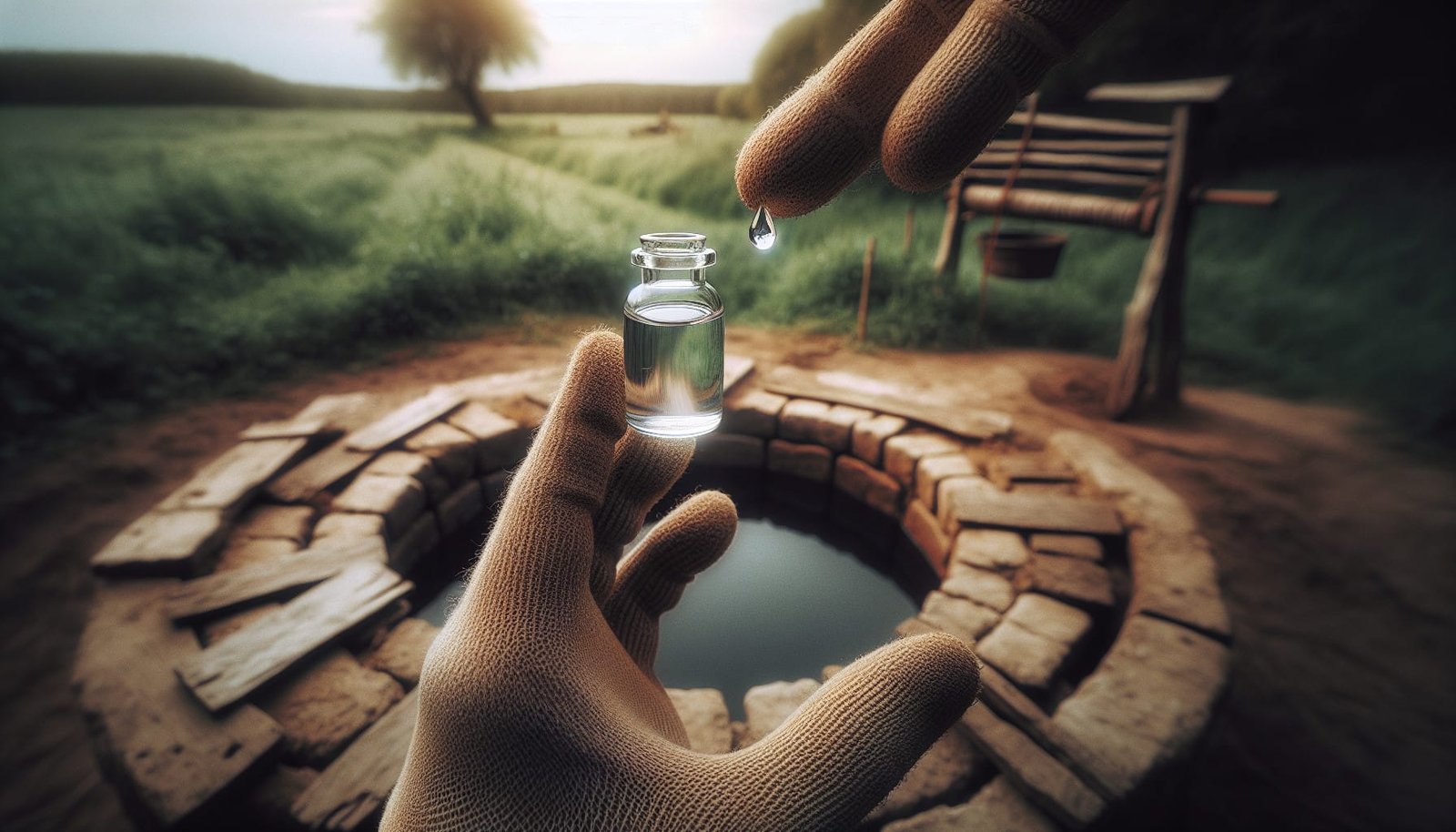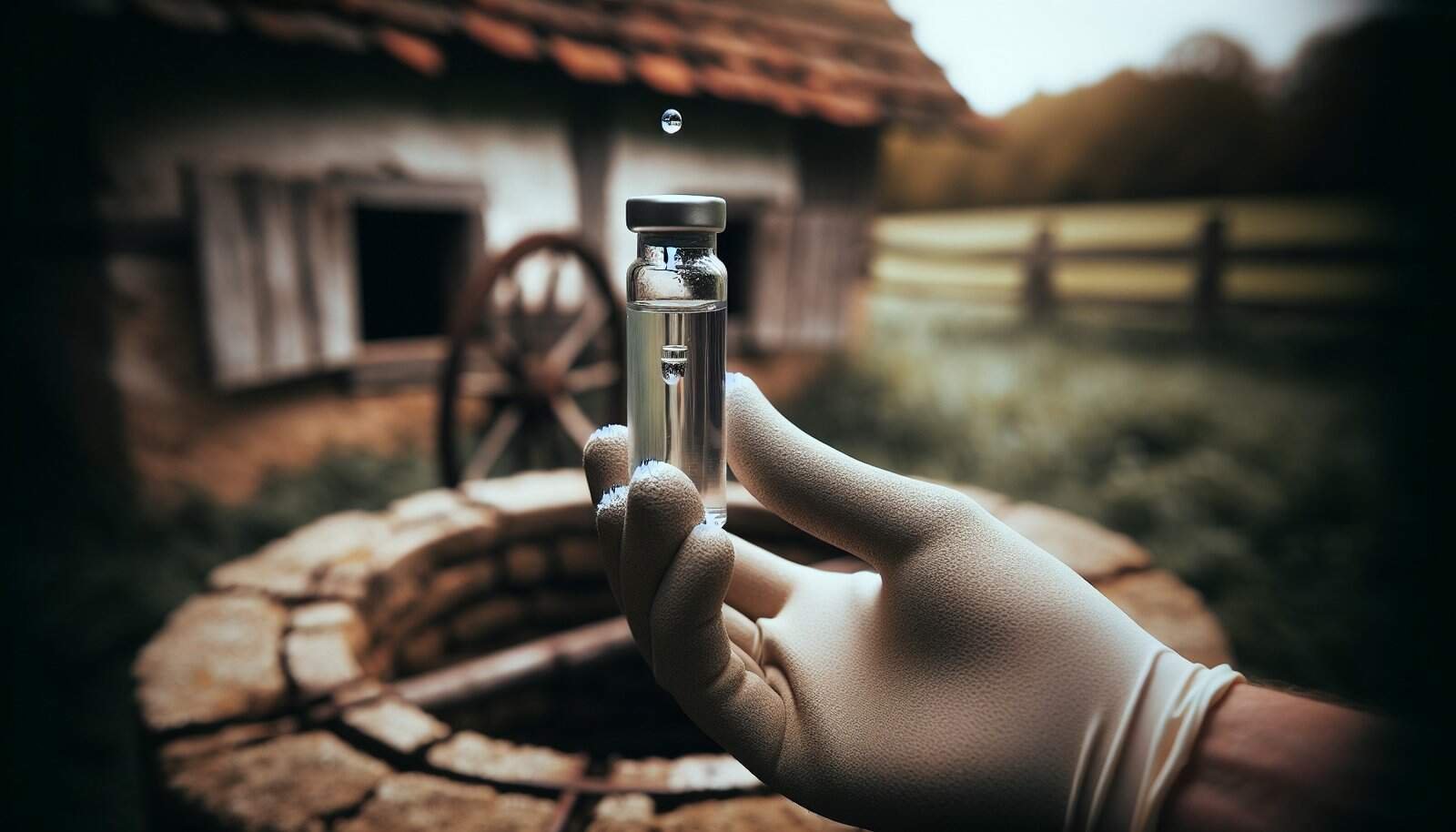Are you worried that pesticides might be contaminating your well water after nearby spraying or heavy rain?
Why testing your well for pesticides matters
You rely on your well for drinking, cooking, bathing, and watering animals or gardens. If pesticides reach your well, they can pose short- and long-term health risks for you and your family, especially infants, pregnant people, and those with weakened immune systems. Testing is the only reliable way to know whether pesticide contamination is present and whether you need treatment or other corrective actions.
Who is responsible for testing private wells?
Private wells are generally not regulated by federal drinking water laws, which means it’s your responsibility to test and maintain the well. Local or state health departments and environmental agencies can provide guidance, resources, and lists of certified testing laboratories. If your well serves a rental property or you are part of a homeowners association, there may be additional responsibilities or recommended schedules.

What kinds of pesticides might be in your well water?
Pesticides include herbicides, insecticides, fungicides, and veterinary products. Some are volatile and less likely to persist in groundwater, while others are persistent and can travel through soil to contaminate well water. Knowing which types are used near your property helps you choose the right tests.
Common pesticide categories you may hear about:
- Herbicides: atrazine, glyphosate, simazine
- Insecticides: malathion, chlorpyrifos, diazinon
- Fungicides: chlorothalonil, mancozeb
- Other agricultural chemicals: nematicides, fumigants
How pesticide testing differs from routine water testing
Typical private well tests often check for bacteria, nitrates, and basic minerals. Pesticide testing is more specialized. Many labs offer pesticide panels that test for dozens to hundreds of compounds using advanced instruments. You usually cannot rely on a general-purpose home test kit to catch low-level pesticide contamination — laboratory analysis is the most reliable option.

Overview of analytical methods used by labs
Labs use sensitive, validated techniques to detect pesticides at very low concentrations. Each method has different strengths.
- GC-MS (Gas Chromatography–Mass Spectrometry): Good for volatile and semi-volatile pesticides.
- LC-MS/MS (Liquid Chromatography–Tandem Mass Spectrometry): Excellent for a wide range of polar and non-volatile pesticides, including many herbicides and insecticides.
- ELISA or immunoassay screens: Rapid and inexpensive screening tests for specific compounds (e.g., atrazine), but can give false positives/negatives and usually require confirmation by GC-MS or LC-MS/MS.
- EPA approved analytical methods: Labs often follow EPA or state methods that specify sample handling, detection limits, and reporting standards.
How to choose what to test for
Choosing substances to test for depends on risk factors around your property:
- Agricultural operations nearby: test for common local herbicides and insecticides.
- Lawn and garden use: test for the products you use or that might be used by neighbors.
- Historical contamination or spills: test for the known chemicals that were used or released.
- Unknown exposures: consider a broad “multi-residue” pesticide panel that screens for many compounds.
Ask your local health department which compounds are most commonly detected in your region and request a panel that includes those.

How often should you test?
At minimum, test your well water annually for bacteria and nitrates. For pesticides, consider these guidelines:
- Test for pesticides at least once a year if you live near agricultural areas.
- Test after known pesticide application events near your property, heavy rainfall, flooding, or if you notice changes in taste, odor, or appearance.
- Test when someone vulnerable is living in the home (infants, pregnant people, immunocompromised).
- Test after well maintenance, new construction near the well, or if you suspect contamination.
Finding an accredited laboratory
Use a state-certified or EPA-accredited drinking water laboratory to ensure reliable results. Contact your state environmental agency or health department for a list of certified labs. Ask prospective labs:
- Are you certified for drinking water pesticide analysis in this state?
- Which pesticide panels do you offer and what are the detection limits?
- What are sample collection requirements and holding times?
- How long until I receive results and what does the report include?
- What are the costs for individual tests or panels?

Costs and turnaround time
Costs vary widely with the scope of testing:
- Single pesticide tests: roughly $25–$150 each, depending on the lab and compound.
- Small panels (10–20 analytes): $100–$400.
- Large multi-residue panels (50–200+ analytes): $300–$1,000 or more. Turnaround time can range from a few days to two weeks. Faster processing is sometimes available at higher cost.
Home test kits: pros and cons
Home pesticide test kits are available and can be useful for screening, but they have limitations: Pros:
- Quick results
- Lower cost than laboratory analysis
- Can indicate whether follow-up lab testing is warranted Cons:
- Limited to a few specific chemicals
- Lower sensitivity; may miss low-level contamination
- Higher rates of false positives/negatives If you get a positive result with a home kit, confirm it with a certified laboratory test before taking major steps.

Step-by-step: How to collect a pesticide water sample
Collecting a representative sample is critical. Labs typically supply approved bottles and written instructions. Follow these general steps and always follow the lab’s specific guidance:
- Contact the lab: order sample bottles and instructions specific to pesticides.
- Choose sampling point: usually an outdoor spigot or the tap you use most often, after removing hose attachments and aerators. For legal or investigative tests, follow chain-of-custody procedures.
- Purge the line: run the water for several minutes to clear stagnant water and get fresh well water. If your well pump has a pressure tank, run until temperature and flow stabilize.
- Do not disinfect the tap: do not use bleach or disinfectant before sampling.
- Use clean gloves: wear nitrile or latex gloves to avoid contamination.
- Fill bottles as instructed: some methods require filling to the brim, others require leaving headspace for preservation. Many pesticide bottles are amber to reduce light exposure.
- Preserve and cool: place samples on ice or in a cooler immediately. Many labs require samples to be kept at 4°C.
- Deliver quickly: follow holding time requirements and deliver to the lab as soon as possible. Delays can change concentrations.
- Complete paperwork: include sample ID, collection time/date, and any required chain-of-custody forms.
Sample holding times and preservation
Different pesticides and methods have specific holding times (the time a sample can be stored before analysis without significant change). These can range from 24 hours to two weeks depending on the analyte and method. Always follow the lab’s instructions on preservation (e.g., cooling, adding preservatives if specified). If you fail to meet holding times, the lab may reject the sample or report less reliable results.
Interpreting lab results: units and standards
Lab reports typically list concentrations in micrograms per liter (µg/L), which is equivalent to parts per billion (ppb). Some results may be in milligrams per liter (mg/L) for higher levels.
Compare results to:
- EPA Maximum Contaminant Levels (MCLs) for public water systems (useful benchmarks).
- State health advisory levels or guidance values, which may be more stringent.
- Health-based screening values for sensitive populations.
If a pesticide is detected but below the EPA MCL, you may not need immediate action, but consider retesting and monitoring. If levels exceed a regulatory or health advisory value, take prompt steps to reduce exposure and consult public health officials.
Examples of EPA MCLs (use as a starting reference)
Below is a sample table showing a few commonly discussed pesticides, typical lab methods, and the EPA MCL where one exists. Regulations and guidance change, so always verify current numbers with the EPA or your state agency.
| Pesticide (example) | Typical lab method | EPA MCL (example) | Treatment effectiveness (general) |
|---|---|---|---|
| Atrazine | LC-MS/MS or GC-MS | 3 µg/L (3 ppb) | Granular activated carbon (GAC), reverse osmosis (RO) |
| Simazine | GC-MS/LC-MS/MS | 4 µg/L (4 ppb) | GAC, RO |
| Alachlor | GC-MS/LC-MS/MS | 2 µg/L (2 ppb) | GAC, RO |
| Glyphosate | LC-MS/MS (specialized) | 700 µg/L (700 ppb) | RO most effective; GAC less effective for glyphosate |
| Chlorpyrifos | GC-MS | No current federal MCL (health advisories exist) | GAC and RO effective for many organophosphates |
Note: This table gives examples and is not exhaustive. State limits and advisories can differ and may change over time.
What to do if a pesticide is detected
If your lab report shows pesticide detection, follow these steps:
- Confirm: repeat sampling and/or test with a second lab to confirm the result.
- Identify the source: work with local extension services or environmental agencies to identify likely sources (surface runoff, nearby application, septic issues).
- Limit exposure: while you assess options, use bottled water for drinking and cooking if advised, particularly for infants and pregnant people.
- Notify: inform household members, neighbors (if the source may be shared), and your local health department if levels are high.
- Consider treatment: evaluate point-of-entry or point-of-use treatment systems that target the detected compounds.
- Monitor: implement a follow-up testing schedule to ensure remediation and to track seasonal changes.
Treatment options and pros/cons
Treatment choice depends on the detected pesticide(s), concentration, water use, and budget.
Point-of-Entry (whole-house) vs Point-of-Use (under-sink):
- Point-of-entry treats all water coming into the home (recommended if pesticides impact bathing or whole-house supply).
- Point-of-use treats only drinking and cooking water (more affordable, treats less volume).
Common treatment technologies:
Granular Activated Carbon (GAC) and Carbon Filters
- Pros: Effective for a wide range of organic pesticides, relatively low cost, simple operation.
- Cons: Cartridge changes or media replacement required; effectiveness varies by compound and water chemistry; not effective for some very polar compounds (e.g., some forms of glyphosate).
- Typical maintenance: replace cartridges or regenerate media per manufacturer/lab guidance.
Reverse Osmosis (RO)
- Pros: Very effective for many pesticides, heavy metals, and most dissolved solids when properly maintained.
- Cons: Produces wastewater (brine), requires pre-filtration, more expensive upfront and for maintenance, typically a point-of-use solution (under-sink).
- Use: Good for ensuring drinking water safety.
Ion Exchange
- Pros: Effective for certain charged species; can be used for targeted removal.
- Cons: Not universally effective for all pesticides; requires regeneration and maintenance.
Advanced Oxidation (AOP), Ozone, Ultraviolet with Peroxide
- Pros: Can break down some pesticides into less harmful products.
- Cons: Complex, higher cost, may produce byproducts; requires professional design.
Blending and Source Control
- Pros: If contamination is from a transient surface runoff, mixing with clean water or repairing the source can lower concentrations.
- Cons: Not a reliable long-term solution if contamination is persistent.
Well remediation and sealing of pathways
- Pros: Addressing well construction defects, surface seals, and nearby drainage can reduce pesticide entry.
- Cons: May be costly and require professional contractors.
Cost ranges for treatment
Costs vary greatly by system size and complexity:
- Point-of-use RO system: $300–$1,500 installed, plus filter changes annually.
- Under-sink carbon filter cartridges: $50–$300 per year in replacement filters.
- Whole-house GAC systems: $1,500–$10,000 installed, depending on flow rate and media; media replacement or regeneration costs add ongoing costs.
- Advanced systems (AOP, custom treatment): $5,000–$25,000+ depending on complexity.
Get multiple quotes and ask for performance data specific to the pesticides you need removed.
Preventing pesticide contamination of your well
Prevention is often more effective and less expensive than treatment.
- Maintain a protected wellhead: ensure well casing extends above ground and has an intact cap.
- Create a buffer zone: keep pesticide mixing, storage, and application at a safe distance from the well (recommendations vary by state; a common list suggests at least 50–100 feet or more depending on slope).
- Properly store and dispose of pesticides: never store pesticides near the well; dispose of unused chemicals according to label and local regulations.
- Landscape wisely: slope the ground away from your well to reduce runoff; avoid placing pesticide-treated areas uphill from the well.
- Use integrated pest management (IPM): reduce reliance on chemical controls through nonchemical practices.
- Secure underground lines: check for damaged drainage fields or tile drains that could transport pesticides.
- Avoid direct application near well: do not spray pesticides within the immediate vicinity of the wellhead or within the well’s protective area.
Working with professionals
For serious contamination or complex situations, consult:
- Local health department or state environmental agency for guidance and resources.
- Licensed well contractor for well repairs, sealing, or relocation.
- Certified water treatment professional for system selection and installation.
- Agricultural extension agents for recommending safer application practices and alternative pest management.
Chain of custody and legal considerations
If sampling may be used in legal or regulatory actions (for example, to prove contamination from a neighbor or an agricultural operation), follow strict chain-of-custody procedures:
- Use certified lab bottles and forms.
- Record sample ID, date/time, collector name, and conditions.
- Seal and label samples as instructed.
- Transport directly to the lab or use documented courier services.
- Retain copies of all documentation and laboratory reports.
Troubleshooting unexpected results
- Low-level detections below health limits: consider retesting and monitor periodically; check for seasonal patterns.
- Variable or inconsistent results: assess sampling technique, sample point, lab QA/QC, and well conditions. Test multiple points (tap, hose spigot, or raw well water) to isolate contamination paths.
- Worsening results over time: investigate potential new sources, groundwater flow changes, or well construction issues.
Frequently asked questions (FAQ)
Can I rely on a single test for long-term safety?
A single test gives a snapshot in time. Groundwater and pesticide use can change seasonally or after weather events. Regular testing is the best way to track your well’s safety, especially if you live near pesticide use areas.
Are pesticides removed by boiling or disinfecting?
Boiling does not reliably remove pesticides and may concentrate them as water evaporates. Disinfecting with chlorine kills microbes but does not remove most pesticides.
What about bottled water?
Bottled water can be a short-term alternative for drinking and cooking if your well test shows high pesticide levels. Make sure the bottled source is appropriate for your needs and check labels.
Who pays for testing after a suspected agricultural application?
Typically, the well owner pays for testing. If contamination is confirmed and linked to a specific party, local laws and agreements may determine responsibility for remediation costs. Consult your local health department or an attorney if needed.
Sample checklist before you test
- Contact local health department to discuss local risks and accredited labs.
- Order sample bottles and instructions from an accredited lab.
- Identify which pesticides or panels to request.
- Schedule sampling to avoid heavy rainfall and to follow lab holding times.
- Purge the tap and collect sample per instructions.
- Transport samples on ice and deliver to the lab promptly.
- Keep paperwork and chain-of-custody forms.
- Review and interpret the report with a health or water treatment professional.
Final notes and next steps
Testing your well for pesticides is the only reliable way to know what’s in your water. Use accredited labs, follow sampling instructions exactly, and take immediate action if results show unsafe levels. Prevention through good well maintenance and careful pesticide storage/use can greatly reduce risks. If you find contamination, confirm the finding, consult local authorities and treatment professionals, and consider both short-term exposure reduction and long-term remediation strategies.
If you’d like, you can tell me:
- where you’re located (state) so I can point you to local resources,
- what pesticides you think might be a concern,
- whether you want a list of accredited labs in your area.
I can help with sample wording to contact your health department, a checklist tailored to your well type, or a comparison of treatment options for specific pesticides you’re worried about.
